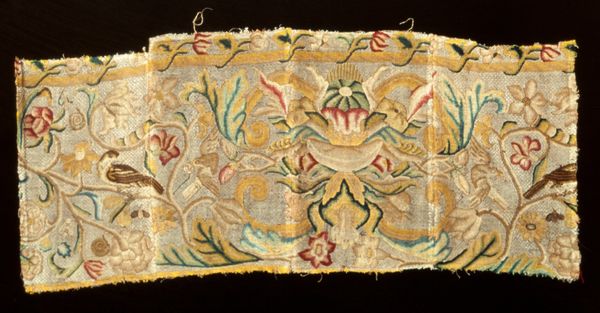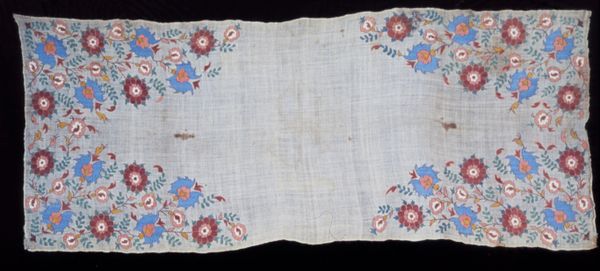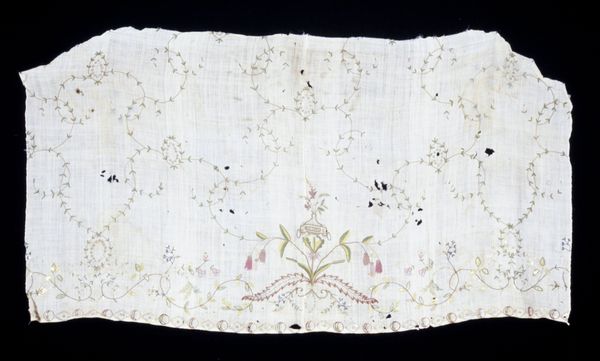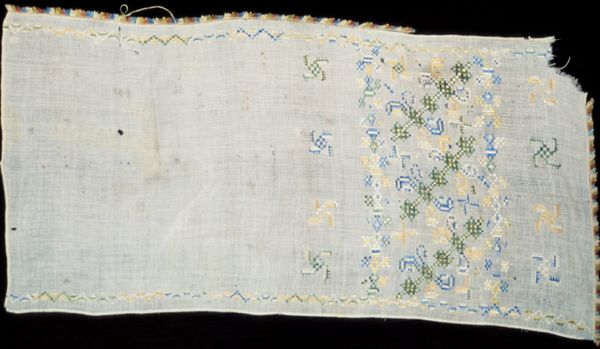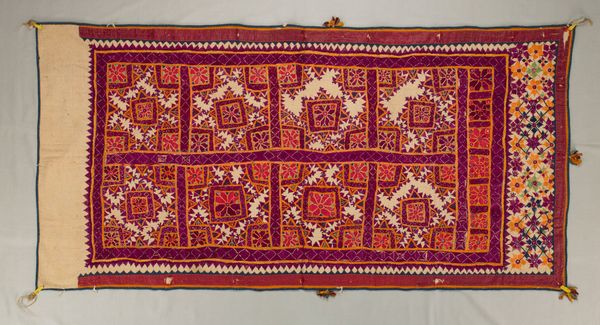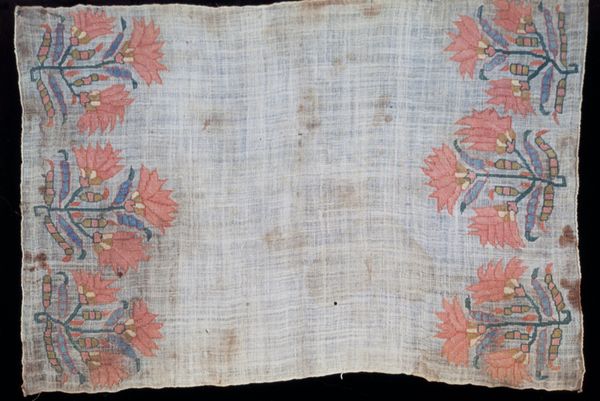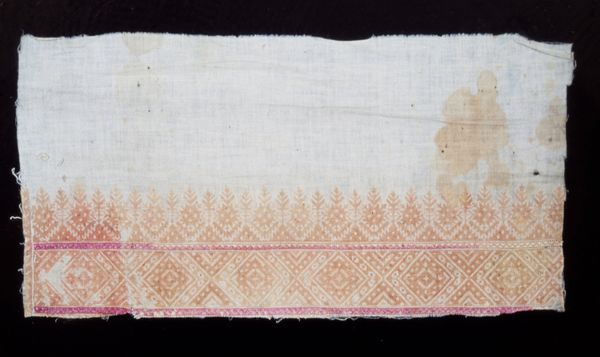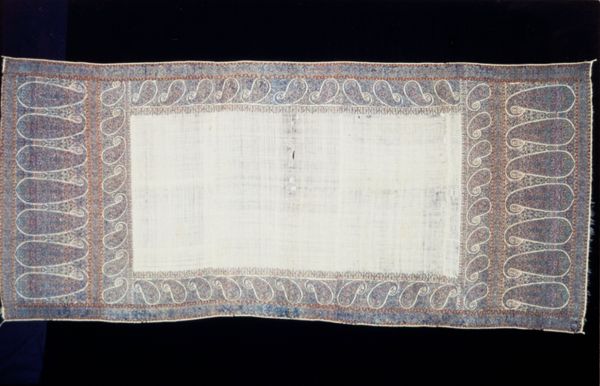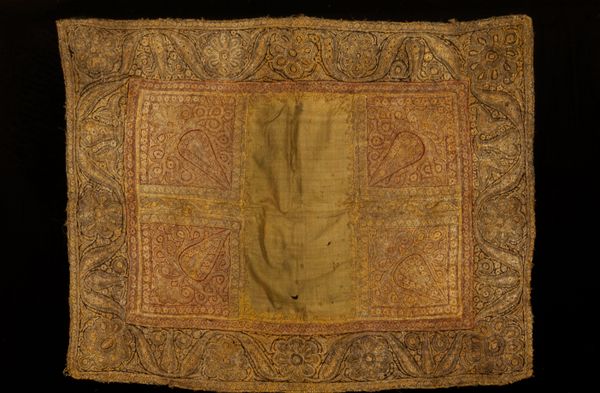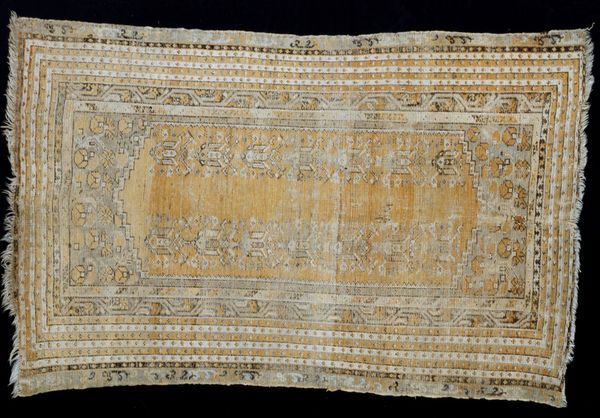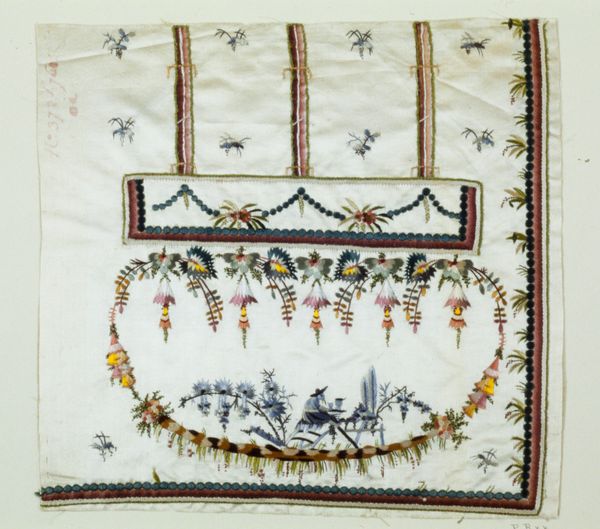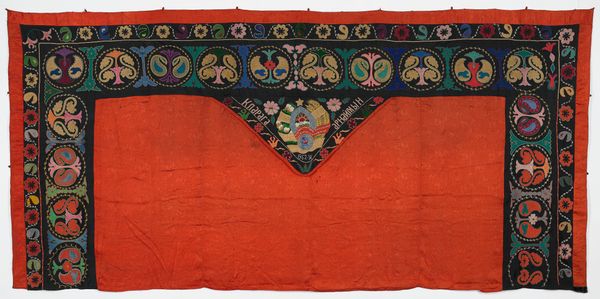
weaving, textile, cotton
#
pattern
#
weaving
#
textile
#
folk art
#
hand-embroidered
#
folk-art
#
repetition of pattern
#
pattern repetition
#
cotton
#
decorative-art
#
decorative art
Dimensions: 12 x 5 in. (30.48 x 12.7 cm)
Copyright: Public Domain
Curator: This is a piece called "Fragment," an intriguing cotton textile from approximately the 19th century. It’s part of the decorative arts collection here at the Minneapolis Institute of Art. Editor: My first thought is, "charming domesticity," even if only a partial survival. I’m immediately drawn to the detailed embroidery; such intricate and repeating motifs. You can almost feel the patience woven into the fabric. Curator: The act of weaving itself is something, and the maker's intentions come to mind, for it makes you consider its original social context, the unseen labour, the maker’s role, potentially, within their community. This could be about the role of women's work and how textile traditions communicate identity and culture, whether functional, for display or part of some other artefact. Editor: Absolutely. We can look at it through the lens of the means of production, what the material implies. Cotton production in the 19th century was certainly shaped by global economies and power dynamics. Knowing where this piece was likely produced helps ground our interpretation. This fragment hints at the availability and exchange of cotton as a commodity at that moment in history. Curator: I’m thinking also about folk-art traditions. How are these hand-embroidered motifs expressions of regional or cultural identity, perhaps resisting dominant aesthetic values? It’s crucial to acknowledge that craft practices often reflect power relations of gender and class. This "Fragment" speaks volumes about identity and creative agency. Editor: Precisely, we could study how the chosen colours, and the skill involved in the weaving—it all impacts value and access to raw resources. How does materiality inform consumption patterns, or speak to social dynamics around leisure, say if this were adornment, rather than merely functional? The weaving acts almost as evidence itself. Curator: I wonder, too, how this would have functioned as resistance against cultural homogenisation through craft traditions. Editor: These questions of context, material, and labour provide avenues for continued dialogue and contemplation! Curator: Indeed, thinking about "Fragment" in terms of its time deepens our contemporary understanding and allows its story to be known again.
Comments
No comments
Be the first to comment and join the conversation on the ultimate creative platform.
